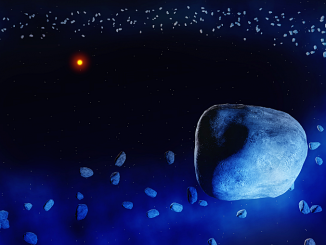
News

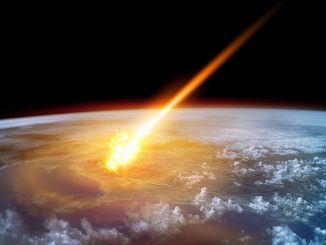
Clues to ancient 15-mile-wide asteroid impact found in Western Australia
An international team of scientists has found evidence of a major asteroid impact that occurred approximately 3.5 billion years ago. Tiny glass beads called spherules formed from vaporised material from the asteroid impact were found in a drill core from Australia in some of the oldest known sediments on Earth.
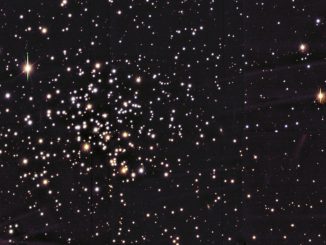
Stars nearly as old as Sun found to have similar spin rates
Astrophysicists from Germany and America have for the first time measured the rotation periods of stars in a cluster nearly as old as the Sun. It turns out that these stars spin once in about twenty-six days — just like our Sun. This discovery significantly strengthens what is known as the solar-stellar connection, a fundamental principle that guides much of modern solar and stellar astrophysics.
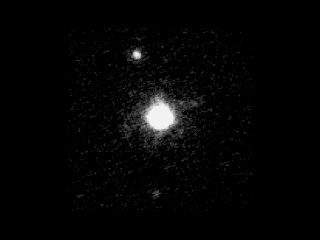
Dwarf planet Haumea’s lunar system smaller than anticipated
Haumea, a dwarf planet on the edge of our solar system, doesn’t have the same kind of moons as its well-known cousin Pluto according to a new study. This is despite original evidence that suggested they both formed in similar giant impacts and adds to the mystery shrouding how these icy bodies formed.
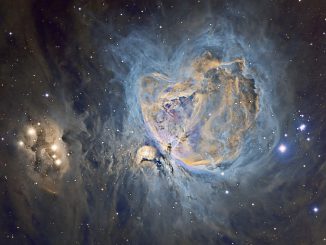
The secret life of the Orion Nebula
Space bears witness to a constant stream of star births. Whole star clusters are often formed at the same time — and within a comparatively short period. Researchers from the Max Planck Institute for Astronomy in Heidelberg have proposed a new mechanism that relies on the interplay between magnetic fields and gravitation to explain this quick formation, investigating a filament of gas and dust which also includes the well-known Orion Nebula.
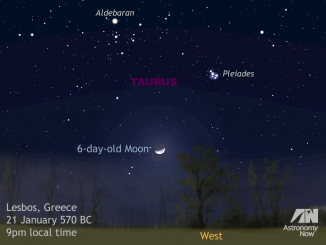
Astronomical software accurately dates 2,500-year-old lyric poem
Physicists and astronomers from the University of Texas at Arlington have used advanced software to accurately date lyric poet Sappho’s “Midnight Poem,” which describes the Pleiades star cluster in the constellation of Taurus having set at around midnight, when supposedly observed by her from the Greek island of Lesbos more than 2,500 years ago.
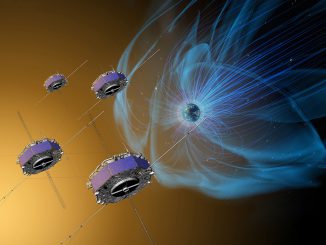
NASA directly observes fundamental process of nature for first time
Like sending sensors up into a hurricane, NASA has flown four spacecraft through an invisible maelstrom in space, called magnetic reconnection. Magnetic reconnection is one of the prime drivers of space radiation and so it is a key factor in the quest to learn more about our space environment and protect our spacecraft and astronauts as we explore farther and farther from our home planet.

Small metal-deficient galaxy could shed new light on Big Bang
Astronomers recently found that a galaxy about 30 million light-years away nicknamed Leoncino, or “little lion,” contains the lowest level of heavy chemical elements, or “metals,” ever observed in a gravitationally bound system of stars. The elemental make-up of metal-poor galaxies is very close to that of the early universe.
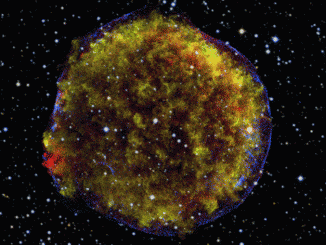
Chandra captures expanding debris from Tycho’s supernova remnant
Astronomers have observed the debris field from the supernova of 1572, now known as Tycho’s supernova remnant, with NASA’s Chandra X-ray Observatory and the NSF’s Karl G. Jansky Very Large Array (VLA). By combining the X-ray data with some 30 years of observations in radio waves, astronomers have also produced a movie showing the expansion from the explosion is still continuing 444 years later.

Amateur high-resolution observations of Jupiter to support NASA’s Juno mission
Some of the world’s leading amateur and professional astronomers are meeting on 12-13 May to prepare for a campaign of ground-based global observations in support of NASA’s Juno mission to Jupiter. Delegates from 13 countries in Europe and around the world are meeting at the Observatoire de la Côte d’Azur in Nice, France.
